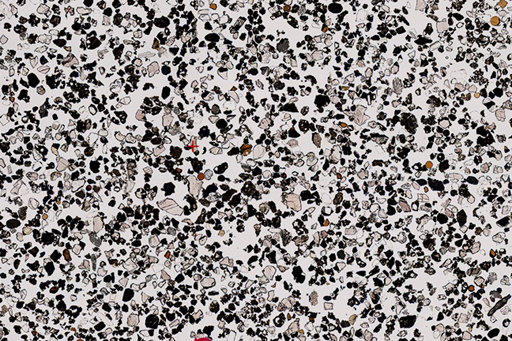2.6 Lunar regolith sample
The next samples of the Moon are very different from the rocks you’ve just looked at: they are samples of regolith – lunar ‘soil’. The regolith on the Moon contained a great discovery and surprise for the Apollo 17 crew and the space science community.
Look at sample 70181 [Tip: hold Ctrl and click a link to open it in a new tab. (Hide tip)] (open this link in a new tab or window so you have the two pages to work with). This is lunar regolith that was collected near the lunar module during the Apollo 17 mission. Regolith is produced from the fine-grained debris formed in both large and small impacts. It contains mineral, glass and rock fragments and also agglutinates (clusters of dust welded together to form larger particles) formed by melting due to continual bombardment of the Moon’s surface by micrometeorites.
Here you can see fragments of different minerals. This is unlike an Earth soil as there is no organic material or water, just very clean mineral fragments. Can you recognise the minerals you have been looking at in previous slides?
There is one additional feature you haven’t seen before. Can you find any small orange spheres? What do you think they are?

